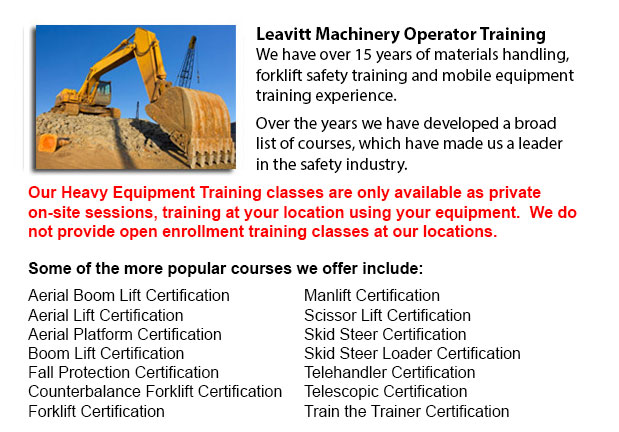
Heavy Equipment Safety Training Goodyear - Heavy equipment safety training is a very important training for those individuals and involved in industrial environments. For people who employ the operators using heavy machinery as a part of their operations would find heavy equipment safety as a very vital subject. Like for example, those who work in the mining field often use heavy equipment in order to carry out different aspects of the job. The agricultural and construction trades are likewise prevalent industries which rely on such machines.
Wrong use of heavy machines can result in fatalities or lead to severe injuries. This is the reason why it is vital for workers to adhere to safety measures and complete required training prior to operating such equipment. There may be orientation regarding the utilization of particular machines and suggested protective gear. Being sensible around such dangerous machinery is always a good rule of thumb.
Part of the heavy equipment safety training required by the people working around the vicinity or operating such equipment. Basic training involves the use and operation of the machinery in addition to a general assessment of the potential associated dangers. It is necessary that employees learn how to properly interpret the various signs that are required legally to serve as a guide for worker safety. These signs often must be visibly posted and present around the workplace.
These safety signs show areas which are restricted to pedestrians due to the constant traffic of heavy machinery, as common in wharves and shipyard environments. Here, people are always being exposed to cranes and forklifts that are responsible for loading or offloading goods onto designated places. Normally, in these conditions, there are warning signs and safety precautions which apply to both the operators of the heavy machine as well as the pedestrians.
Heavy machine operators normally need to follow strict rules and heavy machine safety measures in order to avoid accidents from occurring. Some requirements may include making certain the operator is not under the influence of debilitating substances or whichever drugs and that they are alert mentally.
There are usually guidelines set out by the manufacturers regarding safety precautions such as the maximum load restrictions of a particular piece of machinery. Nearly all nations have established rules about the maximum number of weekly hours employees can work in a single shift in order to prevent whichever kind of accident which may be the result of fatigue. Heavy machine operators are required in North America to finish a heavy equipment safety training program.
-
Crane / Overhead Crane / Truck Mounted Crane / Hydraulic Cranes Training in Goodyear
Bridge cranes or likewise called overhead cranes are a kind of industrial material handling crane making use of a line and hook device that runs on a horizontal beam running along two widely separated rails. Many overhead cranes can be seen inside a... More -
Fantuzzi Parts
The Italian Fantuzzi Group offers a glut of material handling equipment and heavy machinery. The equipment consists of numerous equipment specializing in transporting, loading and unloading goods. The railway freight sector and the port authority req... More -
Forklift Training School Goodyear
Forklift Training School Goodyear - Why A Forklift Training School Could Actually Help A Business And Its Employees - CSA and OSHA establish criteria for forklift safety training that meets existing regulations and standards. Anyone intending to oper... More -
Warehouse Forklift Training Classes Goodyear
Warehouse Forklift Training Classes Goodyear - The purpose of warehouse training classes are to raise the awareness of common workplace hazards. The trainees would learn necessary warehouse safety measures. An emphasis is placed on paying attention t... More -
Aerial Lift Ticket Goodyear
Aerial Lift Ticket Goodyear - A boom truck is frequently recognized by the cable and phone business vehicles that have the long arm folded over their roofs. Usually, a bucket-like apparatus sits at the extension of extendable arms. Sometimes termed a... More -
Telehandler Ticket Goodyear
Telehandler Ticket Goodyear - The telescopic handler or telehandler is a generally used equipment in agricultural and industrial applications. This machine is similar in look to a forklift and even works in a similar way, even though telehandlers are... More -
Scissor Lift Safety Training Goodyear
Scissor Lift Safety Training Goodyear - A Scissor Lift is a practical type of platform that normally moves in a vertical direction. The equipment is capable of this movement because of the use of folding supports that are linked in a criss-cross patt... More -
Aerial Boom Lift Training Goodyear
Aerial Boom Lift Training Goodyear - For individuals who operate or supervise the use of aerial lift platforms, right aerial boom lift Training is necessary. The aerial lift platform is for lifting individuals, materials and tools to elevated work lo... More

Forklift Training Goodyear
TOLL FREE: 1-888-254-6157
Goodyear, Arizona
forkliftcertificationgoodyear.com
Email Us
About Us


